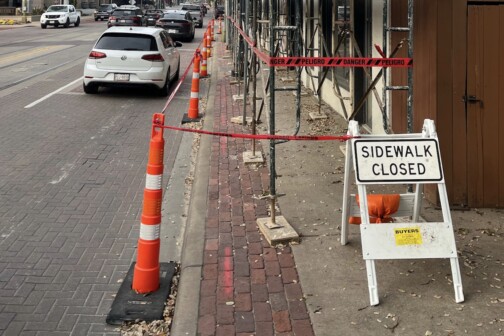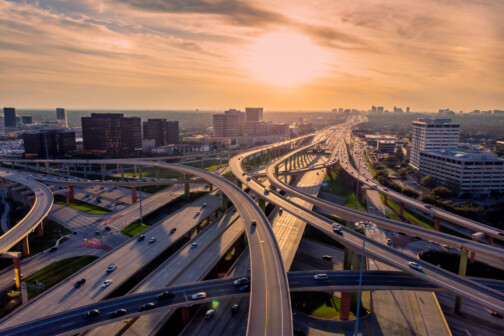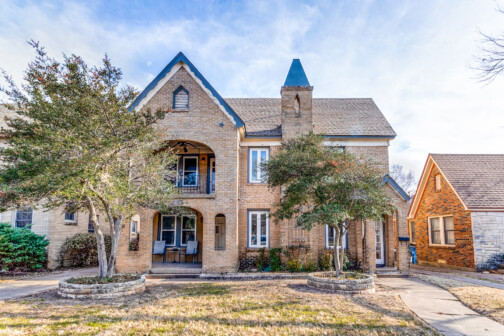I’ve been meaning to mention something for the past week. Now that we’ve finished some work on our “print product,” I have a moment to say: you need to read this special report published by the Morning News and helmed by its architecture critic, Mark Lamster. “Reinventing Dealey Plaza” is a major piece of civic journalism that deserves lots of attention and maybe even a community presentation and panel discussion at 6:30 p.m. on Tuesday, November 15, at the Sixth Floor Museum (sign up here).
Major aside that I almost certainly should have resisted the urge to include: I wasn’t sure how best to share the report with you. The News just reported its dismal third-quarter results, and they indicate a dwindling number of you will encounter the printed Arts & Life version of Lamster’s work. The paper lost $2.6 million in the three-month period that ended September 30, on revenue of $37.7 million. Revenue from digital-only subscribers rose by $1 million, but print subscription revenue dropped $900,000. The paper has144,631 total subscribers, adding in the third quarter 1,484 digital subscribers but losing 2,918 print subscribers. Anyway, “Reinventing Dealey Plaza” lies behind a paywall. This is one of the reasons you should subscribe to the paper if you can afford it.
Still with me? Here’s how Lamster begins his report:
“The time has come for Dallas to redesign Dealey Plaza and the Triple Underpass, which together represent one of the city’s most profound urban failings.
“These spaces define Dallas. They are where the city began, and the site of several of its most tragic moments in history, from the lynchings of the Civil War era to the assassination of President John F. Kennedy. Today, they are centers of tourism and public gathering, and a principal point of access to downtown.
“And yet in their current state, they do not meet their many vital civic obligations. This represents a sad decline from the grand ambitions that characterized their invention.”
From there, he leads us through the city’s history, all the way back to John Neely Bryan, through current day, as it relates the most infamous ground in Dallas. One of my favorite details, about the demolition of two city blocks, beginning in 1934, to make room for cars: “[N]one of the destroyed structures was more beloved than William Apperson’s New Idea Saloon, notable for its ornate hand-carved woodwork and large mirrors behind the bar. The establishment’s design claim to fame, however, was less its decor than Apperson himself, who sported a carefully maintained beard that ran down to his belt.”
I am right now seeking investors to start a new New Idea Saloon. Its logo will be the Woofus, another idea championed by Mark Lamster.
Shorter aside that is more germane than the previous aside: I had been led to believe that Lamster had moved to Boston. He is no longer teaching at UTA, and his bio on the “Reinventing Dealey Plaza” piece IDs him as a Loeb Fellow of the Harvard Graduate School of Design. He tells me his wife has taken a job at the Globe, and, yes, that requires a “dual existence,” but as Lamster puts it: “Dallas is still home, and we still have our house. I am back and forth pretty regularly. Still gonna be traveling our benighted streets on the regular. bigd4eva!”
So that’s good news. Because only Lamster could have convinced the News to commission a team of designers (Chris Reed of Stoss Landscape Urbanism in Boston; Monica Ponce de Leon of MPdL Studio in Princeton, New Jersey; Lauren Cantrell of Dallas-based DELINEATOR) to draft this plan. Again, you should find a way to access the entire thing. The historical context is key. The details are many and thoughtful.
Just one of those details: “Turn Elm Street into a space for pedestrians and create memorial pools marking the points where bullets hit President Kennedy (removing the vulgar white X’s painted by assassination theorists).”
And then, as he works his way to his final paragraphs, Lamster writes: “ ‘Where does the traffic go?’ can no longer be the primary and determinative urban planning question in Dallas. For far too long, Dallas has had its imperatives reversed, and it has suffered the consequences: empty, dangerous streets, disinvestment, infrastructure needs that can never be met.
“The question the city must ask is, ‘How do we make spaces where people want to be?’ This plan demonstrates how that can be accomplished.
“That reorientation, moving away from our auto-centric past and toward a multi-modal present, is essential as the city looks forward. If the pandemic has shown us anything, it is that we both want and need more pedestrian-oriented public spaces. Downtown is becoming a dynamic residential community, not just a place to commute in and out of.”
As I said, you should read the entire thing.
Author







